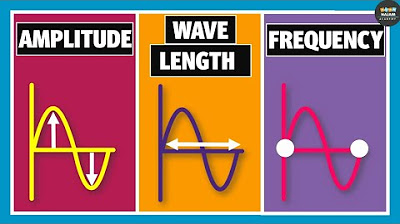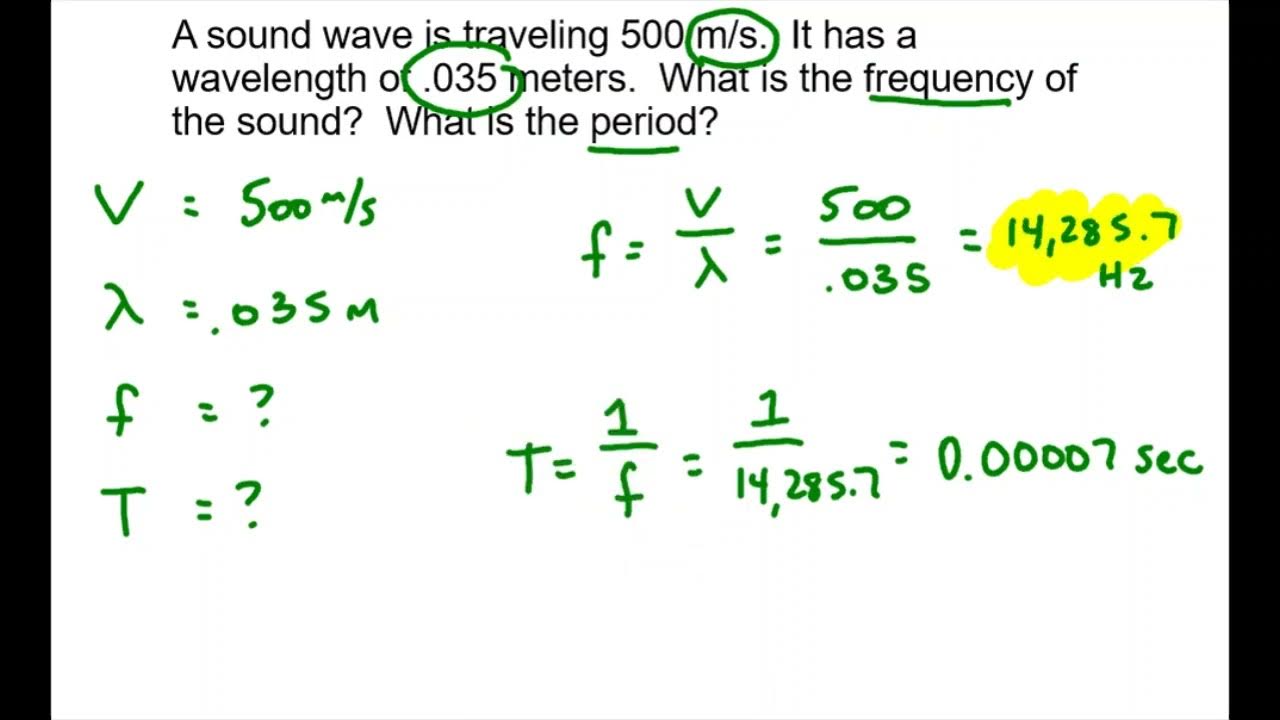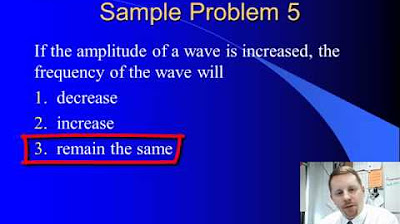What is Frequency?
TLDRThe video script delves into the concept of frequency, a fundamental tool for describing signals in our surroundings. Defined as the number of times an event occurs within a given period, frequency is often measured in Hertz, signifying one occurrence per second. The video cleverly uses everyday examples, such as bathroom breaks and jumping on a bed, to illustrate the idea of frequency and its inverse, the period, which measures the duration of one complete cycle of an event. The script further explores the relevance of frequency in various contexts, including the refresh rates of screens, human hearing sensitivity, and music creation. It also touches on the use of waveforms to represent these repeating patterns. The video concludes with an invitation to engage with the content and a teaser for upcoming topics on different types of waveforms.
Takeaways
- 📡 The concept of frequency is introduced as the number of times an event occurs over a period of time, with higher frequency indicating more frequent occurrences.
- 🔁 The standard unit for measuring frequency is Hertz (Hz), which is defined as one event per second.
- 🔄 Frequency describes repetitive patterns or events, and the period is the duration of one complete cycle of the event.
- ⏱️ The relationship between frequency and period is inverse; the period is calculated as 1 divided by the frequency.
- 💡 Understanding frequency is essential for various applications, such as screen refresh rates in gaming and televisions, which impact the smoothness of motion.
- 👂 Human hearing is sensitive to frequencies ranging from 20 Hz to 20,000 Hz, and hearing loss can result in the inability to perceive certain frequencies.
- 🎶 Music is composed of multiple different frequencies and signal shapes, and specific frequencies correspond to musical notes.
- 💥 Tesla coils can produce sound by generating a specific frequency, such as 440 Hz for the note A.
- 🔊 Experimenting with LEDs and speakers demonstrates how changes in frequency affect the visual and auditory perception of light and sound.
- 🌐 The introduction of waveforms as repeating patterns described by frequency and period, with different waveforms being useful for different applications.
- 📚 Further exploration of waveforms, including sine and cosine functions, is encouraged for those interested in a deeper understanding.
Q & A
What is the definition of frequency?
-Frequency is the number of times that something, literally anything, happens over a period of time.
Why is the term 'frequent' associated with higher frequency?
-The term 'frequent' is associated with higher frequency because it implies that an event is occurring more often or more regularly.
What is the standard unit used to describe frequency?
-The standard unit used to describe frequency is Hertz, which is defined as one per second.
How is the period related to frequency?
-The period is the inverse of the frequency. It represents the duration of one complete cycle of a repeating event, calculated by dividing one by the frequency.
What is an example of a non-repetitive event and how can its frequency be described?
-An example of a non-repetitive event is a street lamp that blinks on for one second and then off for three seconds. Its frequency can be described by calculating the total duration of one on-off cycle (four seconds) and dividing one by that period to get a frequency of 0.25 Hertz.
How does the refresh rate of a screen relate to frequency?
-The refresh rate of a screen is the number of times the screen is updated with a new image per second, which is a measure of frequency. Higher refresh rates, such as 60 or 144 Hertz, result in smoother motion display.
What range of frequencies are human ears sensitive to?
-Human ears are sensitive to frequencies between 20 Hertz and 20,000 Hertz.
How is frequency used in music composition?
-Music is composed of various different frequencies and signal shapes combined together. Each note corresponds to a specific frequency, such as the A note that is commonly tuned to 440 Hertz.
What happens when the frequency of a speaker is increased?
-As the frequency of a speaker is increased, the speaker cone moves more frequently per second. This results in sounds that transition from simple pops to more complex musical notes as the frequency rises.
What is a waveform and how does it relate to frequency?
-A waveform is a visual representation of a wave's shape, which in the context of frequency, shows the repeating pattern of an event over time. Different waveforms have different characteristics and are used for various applications.
What are sine and cosine functions in relation to waveforms?
-Sine and cosine functions are fundamental mathematical functions that describe the shape of periodic waveforms. They are used in the analysis and generation of various types of waves, including sound and light waves.
Outlines
📡 Introduction to Frequency and its基本概念
This paragraph introduces the concept of frequency as a measure of how often something occurs over a period of time. It explains the term through relatable examples, such as the frequency of going to the bathroom or jumping on a bed, emphasizing that a higher frequency means more frequent occurrences. The standard unit for measuring frequency, Hertz, is introduced, and its definition of 'one per second' is highlighted. The relationship between frequency and period is explored, noting that frequency is the inverse of the period, with examples provided to illustrate the calculation of both. The paragraph concludes with a teaser for future content on waveforms and their importance in various applications.
🎮 Applications of Frequency in Daily Life and Science
This paragraph delves into the practical applications of frequency in everyday life, such as screen refresh rates for video games and televisions, and the range of frequencies audible to human ears. It also touches on the concept of music creation through the combination of different frequencies, using the example of a violin tuned to 440 Hertz. The demonstration of frequency and period using LEDs and a speaker is described, showing how changes in frequency affect the visual and auditory experience. The paragraph concludes with an introduction to waveforms, noting their significance in describing repeating patterns and hinting at upcoming in-depth explorations of different waveforms.
Mindmap
Keywords
💡frequency
💡Hertz
💡period
💡signals
💡refresh rate
💡hearing range
💡music
💡waveform
💡LED
💡Tesla coil
💡几何身份
Highlights
The definition of frequency is the number of times that something happens over a period of time.
Higher frequency means something is happening more frequently.
The standard unit for frequency is Hertz, defined as one per second.
Frequency describes a repetitive pattern or event, while period measures the duration of one repetition from start to end.
The relationship between frequency and period is given by the formula: period = 1/frequency.
Refresh rates in screens, such as 60 or 144 Hertz, determine how many times the screen is updated per second, affecting the smoothness of motion.
Human ears are sensitive to frequencies between 20 Hertz and 20,000 Hertz.
Hearing loss is characterized by an inability to hear certain frequencies.
Music is composed of various frequencies and signal shapes combined to create sound.
The violin's A note, tuned to 440 Hertz, demonstrates how specific frequencies correspond to musical notes.
By varying the period of an LED blink, one can observe how frequency affects the visual perception of the blinks.
Adjusting the frequency of a speaker's output results in different sounds, from pops to music notes.
The concept of waveforms relates to the shape and characteristics of repeating patterns described by frequencies.
Sine and cosine are fundamental to understanding waveforms and their applications in various fields.
The video provides a practical and engaging introduction to the concept of frequency and its applications.
The content creator promises a high frequency of content with a period of one week, encouraging viewers to subscribe for updates.
Transcripts
5.0 / 5 (0 votes)
Thanks for rating:





